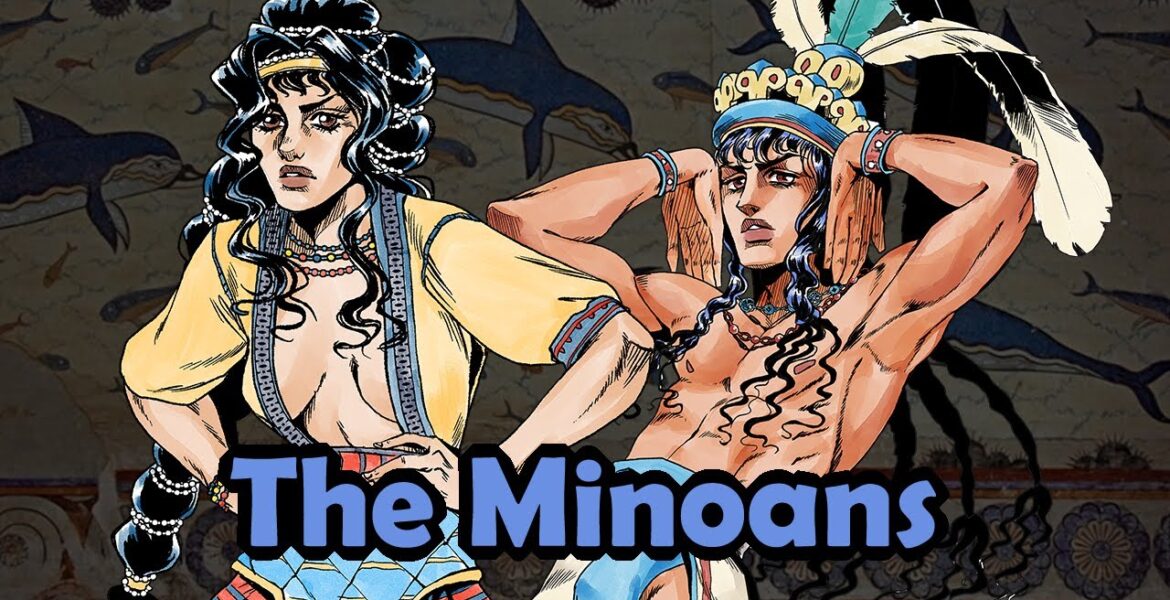Today we will explore the strange and bizarre world of ancient fashion by examining the archaeological research related to the mysterious lost civilization of antiquity: The Minoans of Bronze Age Crete!
Talked about will be everything from social norms and cultural relativism to Minotaurs.
The fact that the Minoans had created the first remarkable civilization is something that also emerges from the clothes they wore. Looking at the Minoan frescoes and the Minoan figurines that have been found in Crete, in ancient Greece (Sparta, Athens) as well as in ancient Egypt, and Mesopotamia, we see that the Minoans are the first in the world who cut and sewed clothes to the measurements of a person.
Already from 2000-1500 BC, they made different clothes for men, women, priests, etc. Therefore, the Minoans are the first to create tailored clothing and fashion.
In other words, we see that the Minoans had a multi-complex culture and more advanced not only than what the previous societies have had but also than what the societies that followed in Greece and Italy since they seem to wear a variety of garments, which are not only luxurious but also elegant and complex.
We do not know exactly what these Minoan garments were called then. Nonetheless, it is obvious that from them come those that today we call: skirt, dress, cardigan, salwar, shorts, robe, sandals, boots, belt, etc.
It should be noted that the rest of the Greeks (Athenians, Spartans), and Romans, during the Minoan era, as well as many years after the so-called Minoan Empire wore clothes that were something like today’s bed linen called a tunic.
The Minoan women’s clothing, as it appears from the description in Homer’s Iliad, as well as the frescoes and figurines found in Knossos, consisted at least of the following, woolen or linen, garments.
In Minoan Crete, women’s clothing was made from a wide variety of materials, such as linen, leather, and wool. They decorated them with bright colors and patterns, with ribbons at the ends, bows, delicate veils.
The jewelry, made of gold, metal, stone, or bone, were sewn on. Particularly important are the figurines findings, mainly those that come from the sanctuaries of eastern Crete from the Middle Minoan Era (2000-1600), but also the seal stones, jewelry and objects, which were related to the care and beautification of the body.
From the description in Homer’s Iliad as well as from the frescoes and statuettes that were excavated in Knossos, it appears that the Minoan men were looser in their clothing than the Minoan women.
However, they dressed in an impressive, elegant, and complex way. Homer characterizes them as well-groomed and polished, with gleaming, clothes and even cut and sewn to their measurements.
According to Homer, Minoan men in ritual practices appear with a knife in the waist belt. This resembles what the Cretans wear in their traditional costumes as well. Moreover, it is also something that can be seen in the figurines found in Knossos.
Cretan merchants traveled to the Eastern Mediterranean to procure gold, copper, and ivory. In return, they offered oil, wine, and aromatic oils. The palace workshops processed these materials with great care, creating works of art unsurpassed in terms of quality and technique.
The information we have about the clothes of the athletes of Minoan Crete comes from the bullfighting performances and the boxing scenes. The sportswear was simple, thus facilitating the movements of the athletes.
It consisted of the so-called Minoan cloth belt that resembles today’s swimwear and a very narrow belt that supported the waist of athletes. Athletes usually had bare feet but sometimes wore soft shoes with slightly raised toes or leather sandals with straps.
The frescos of the bullfights from Knossos depict, that female and male athletes are together at the same time during the religious sport event. Therefore, religious sportswear was common to both sexes.
For this very reason the bodies of the female athletes are symbolically not much different from the male athletes. The gender distinction in this mural is indicated only by the different colors used to depict the skin of the two sexes. Female athletes, however, wore jewelry and had more intricate hairstyles.
READ MORE: The Magnificent Hairstyles of Bronze Age Greece and Europe.


